读书笔记《hands-on-full-stack-development-with-spring-boot-2-0-and-react》使用Reaction材质设置前端的样式-UI
本章介绍如何在我们的前端使用 Material-UI 组件。我们将使用 Button 组件来显示样式按钮。模态表单输入字段被 TextField 组件所取代,这些组件具有许多不错的功能。 Material-UI 提供了 Snackbar 组件,它可以向最终用户显示 toast 消息。我们将 react-toastify 组件替换为 Snackbar 以获得统一的外观。最后,我们使用 AppBar 组件而不是 React 应用程序标头。
在本章中,我们将看到以下内容:
- What is Material-UI?
- How to use Material-UI components in our frontend
- How to remove unused components in the React app
我们在第 4 章中创建的 Spring Boot 应用程序,保护和测试您的后端< /em>,需要与上一章的修改(不安全的后端)一起使用。
我们还需要我们在上一章中使用的 React 应用程序 (carfront)。
通过在终端 you 来安装 Material-UI " class="indexterm"> 正在使用并在安装完成后启动您的应用程序:
让我们首先将所有按钮更改为使用 Material-UI Button 组件。将 Button 导入 AddCar.js 文件:
更改按钮以使用 Button 组件。在列表页面中,我们使用主按钮,在模态表单中,使用大纲按钮:
现在,列表页面按钮应如下所示:
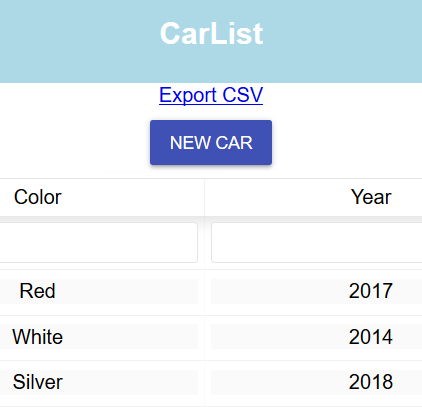
模态表单按钮应如下所示:
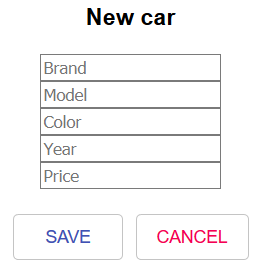
我们使用 car 表中的扁平变体按钮并定义 button 大小一样小。有关表格列,请参见以下源代码:
现在,该表应如下所示:

Material-UI 提供了一个 Grid 组件 可以用来获取一个grid 布局到你的 React 应用。我们将使用 Grid 来获得 New Item 按钮和 Export CSV 链接在同一行。
将以下导入添加到 Carlist.js 文件以导入 Grid 组件:
接下来,我们将 AddCar 和 CSVLink 包装在 Grid 组件中。 Grid 组件有两种类型——容器和项。这两个组件都包装在项目的 Grid 组件中。然后这两个项目的Grid 组件被包装在容器的 Grid 组件中:
现在,您的应用程序应如下所示,并且按钮现在放置在一行中:
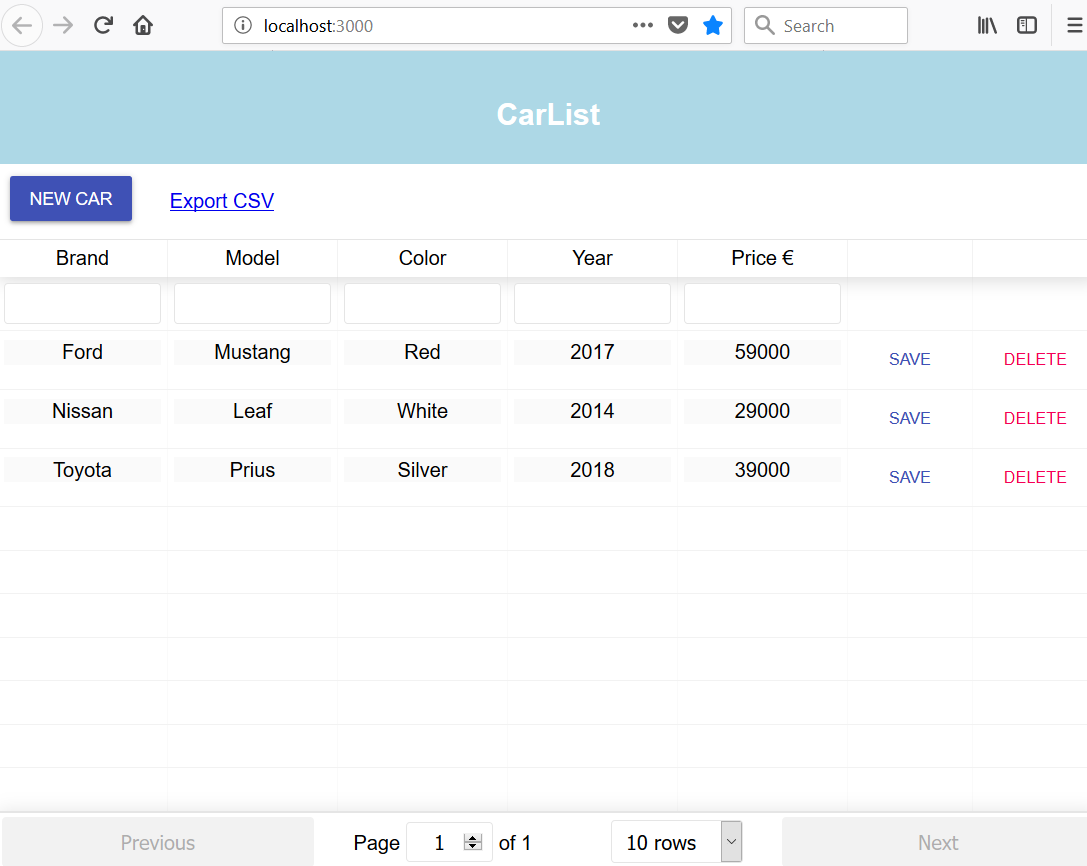
在本节中,我们将更改模态 forminput "id325568673" class="indexterm"> 使用 Material-UI TextField 组件。将以下导入语句添加到 AddCar.js 文件中:
然后,将输入更改为表单中的 TextField 组件。我们使用 label 属性来设置 TextField 组件的标签:
修改后,模态表单应如下所示:
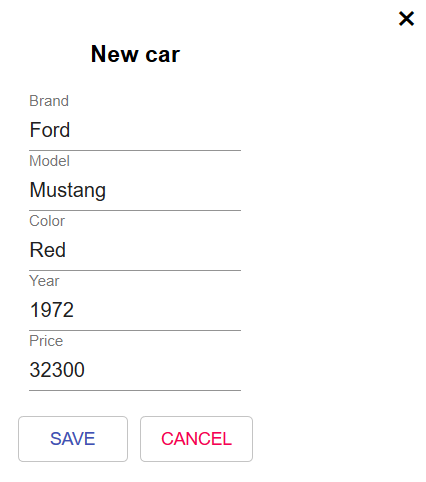
在本节中,我们将用 AppBarapp 标头> 组件。导入 AppBar 和 Toolbar 组件:
从 div 标头 element >App.js 文件。将 AppBar 组件添加到 render() 方法并放置 Toolbar里面的组件。 Toolbar 组件包含应用栏中显示的文本:
现在,您的前端应该如下所示:
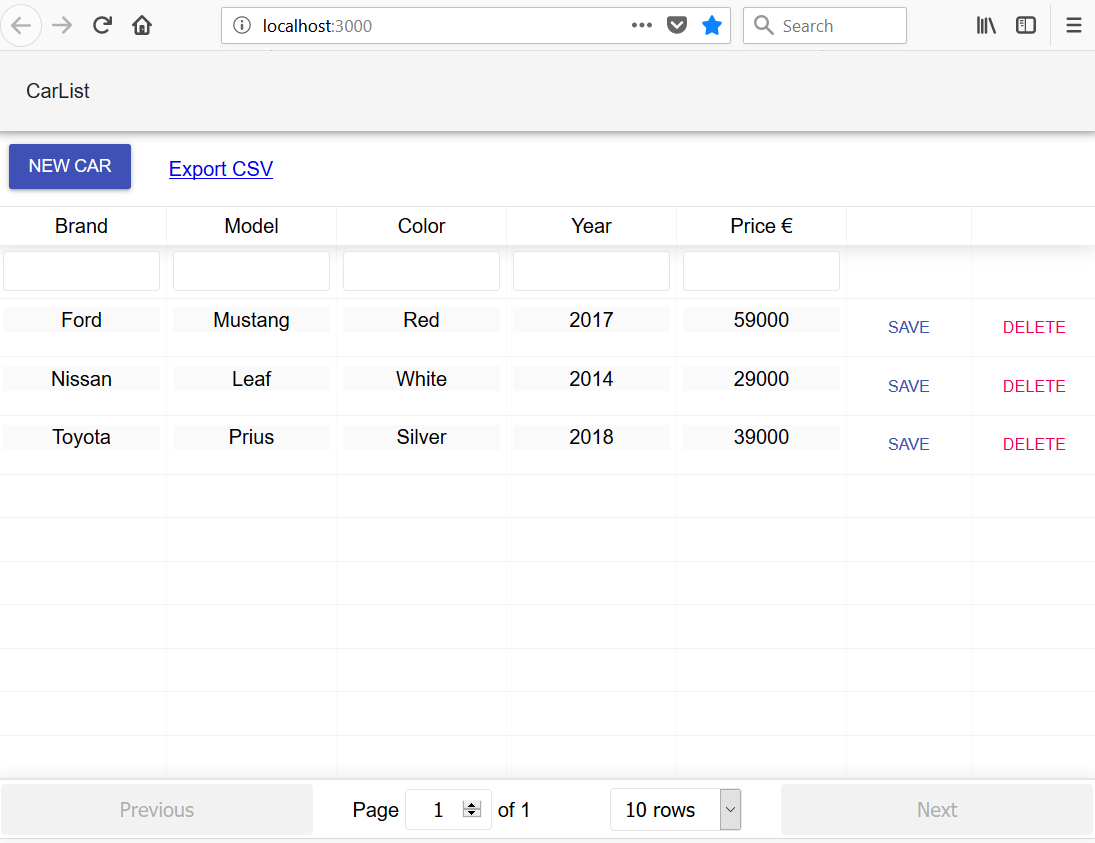
我们已经使用 react-toastify 组件实现了 toast 消息。 Material-UI 提供了一个名为 SnackBar 的组件,可用于向最终用户显示消息。为了在我们的应用程序中获得统一的外观,让我们将该组件用于消息。
我们现在可以从 Carlist.js 文件中删除 react-toastify 导入,我们还可以通过键入以下内容删除组件命令到您正在使用的 终端 :
要开始使用 Snackbar 组件,请将以下导入添加到 Carlist.js 文件中:
Snackbar 需要两个新的状态值,一个用于消息,一个用于状态。将这两个状态值添加到构造函数中。状态状态称为 open,它定义 Snackbar 是否可见:
然后,我们将 Snackbar 组件添加到 render() 方法中。 autoHideDuration 属性定义了在调用 onClose 之前等待的时间(以毫秒为单位)。要显示 Snackbar,我们只需将 open 状态值设置为 true 并设置消息:
接下来,我们要实现 handleClose 函数,该函数在 onClose 事件中被调用。该函数只是将 open 状态值设置为 false:
然后,我们用 setState() 方法替换 toast 消息, set open 值到 true 和显示的文本到 message 状态:
以下是使用 Snackbar 组件的消息截图:
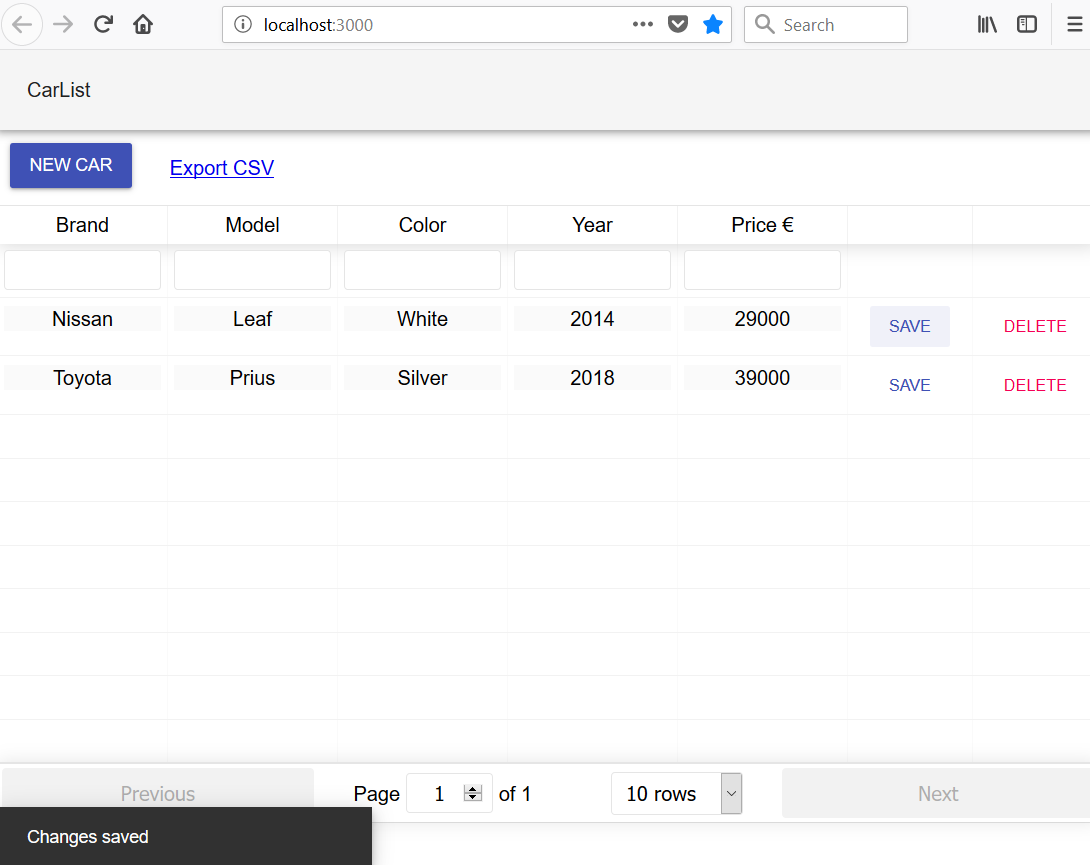
Packt 还有其他学习 React 的好资源:
